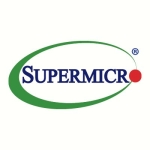What is our primary use case?
The use case is to replace all stakes in all the different kinds of servers. We had some Dells, we had some old HPEs, Generation 6, Generation 7, and so on. We decided to put everything together and create a new datacenter, and move our computing power to a platform that will enable us to be more flexible with our old applications.
We are just in the middle of the migration, and the problem is not the new stuff, the problem is to persuade our old stuff that it must perform more than one gigabyte per second. So HPE is helping us to replicate directly through the old datacenter to storage that we have underneath our Synergy Servers.
How has it helped my organization?
The benefit is that it's going to be maintained, contrary to what we had last year, when the maintenance went off for the last generation of the servers that we had there.
I'm also looking forward to getting some adaptability, and to be more flexible.
For how long have I used the solution?
Less than one year.
What do I think about the stability of the solution?
As far as I can see, it's stable but, as I said, we have only been using it for six months.
What do I think about the scalability of the solution?
We're in partial production. It's no longer a PoC. So far, we haven't hit any limits.
The limits are much above what we have used till now.
How are customer service and technical support?
We use tech support all the time. They were very active before signing the contract, and before delivering the contract. After delivering the contract, they became a little less active. So, it needs some pushing from my side sometimes. But, when the technicians come over, they connect with us. They are very, very supportive.
I imagine it's an issue of numbers. There's no new business behind it now, so that might be a problem with the numbers. When you are trying to sell something, you're very, very active. When you are discussing with an existing customer, then you don't have the pressure from the business side.
Which solution did I use previously and why did I switch?
We had to switch to some solution. It didn't matter which one, we had to replace our old hardware anyway. It was last year when the Synergy came onto the market, and we asked HPE if they would take the opportunity to answer our RFP with the Synergy, and they won.
How was the initial setup?
I wasn't involved in it, but my guys were. They were trained, and I think that they said it was much easier than what they used to previously. So, they're fine with it.
Which other solutions did I evaluate?
We did evaluate other vendors but they fell short in value for money. There were vendors that were cheaper, but their solutions weren't that cohesive. And the match-point of all the RFPs was the complete software that is behind the hardware. That was something that really persuaded us to give them top technical points from all the RFPs.
What other advice do I have?
In terms of our criteria when selecting a vendor they include:
- it must be someone known, someone with a presence in the market
- someone with a good network of partners that can really help you
- a company that is active such that they are not just walking away after you've bought their solution
- reliability.
There are three or four big winners, and we don't want to change because we have some relationships and some experience from the past. When we run into a problem, and someone helped us, that's something called business credit. Something which goes beyond the money.
So far it runs as expected, which is really a nice surprise for me. When you are expecting something to be very fluent, and then, after using it for a year or more, you are seeing the downsides, which are very well hidden from the sales jargon. But, so far, we haven't come up against anything we didn't like.
I think that the completeness of the offer is one thing which should be taken into account. Also, the longevity of the solution. You don't want to change the solution every two or three or five years. I think this solution is something that might last at least seven or eight years, which is fine for us.
Disclosure: PeerSpot contacted the reviewer to collect the review and to validate authenticity. The reviewer was referred by the vendor, but the review is not subject to editing or approval by the vendor.









